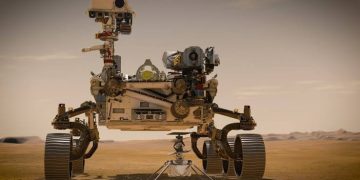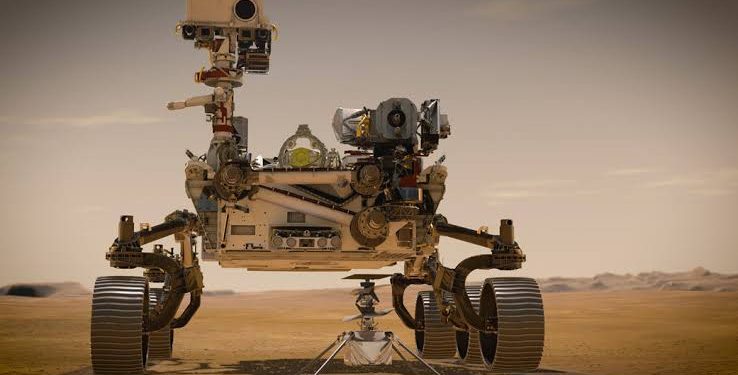In a major achievement, NASA on Tuesday (20 April) converted carbon dioxide from the thin Martian atmosphere into pure, breathable oxygen.
The achievement comes days after NASA conducted the first controlled flight on Mars, and constitutes another step in the agency’s plans for future human exploration of the red planet in the 2030s.
The unprecedented development was achieved by an experimental device aboard the six-wheeled science rover Perseverance.
Notably, Perseverance had landed on the Martian soil on 18 February this year, seven months after being launched from Earth.
The extraction of oxygen from Mars’ carbon-rich atmosphere was carried out by a small experimental instrument, called MOXIE — the first device to ever extract oxygen from the Martian atmosphere.
The toaster-sized MOXIE device is fixed to NASA’s Mars Perseverance rover.
The instrument produced approximately 5 grams of oxygen, which is enough for roughly 10 minutes of breathing time for an astronaut, NASA explained.
These developments were made public via the official Twitter handle of NASA’s perseverance rover, which stated, “Another huge first: converting CO2 into oxygen on Mars. Working off the land with what’s already here, my MOXIE instrument has shown it can be done!
Future explorers will need to generate oxygen for rocket fuel and for breathing on the Red Planet.”
“This is a critical first step at converting carbon dioxide to oxygen on Mars,” said Jim Reuter, associate administrator STMD.
“MOXIE has more work to do, but the results from this technology demonstration are full of promise as we move toward our goal of one day seeing humans on Mars. Oxygen isn’t just the stuff we breathe,” he continued.
“Rocket propellant depends on oxygen, and future explorers will depend on producing propellant on Mars to make the trip home.”
The feat marked the first experimental extraction of natural resources from the environment of another planet for direct use by humans.
Trudy Kortes, director of technology demonstrations within NASA’s Space Technology Mission Directorate, called it the first technology of its kind to help future missions “live off the land” of another planet.
As per the statement by NASA, “While the technology demonstration is just getting started, it could pave the way for science fiction to become science fact – isolating and storing oxygen on Mars to help power rockets that could lift astronauts off the planet’s surface. Such devices also might one day provide breathable air for astronauts themselves.”


































